#boselaphus
Text
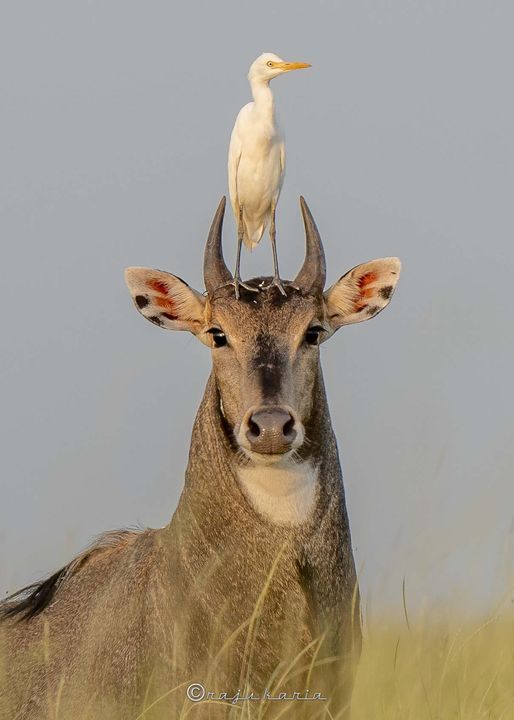
Nilgai (Boselaphus tragocamelus), male, with cattle egret friend, family Bovidae, India
photograph by Raju Karia
901 notes
·
View notes
Text
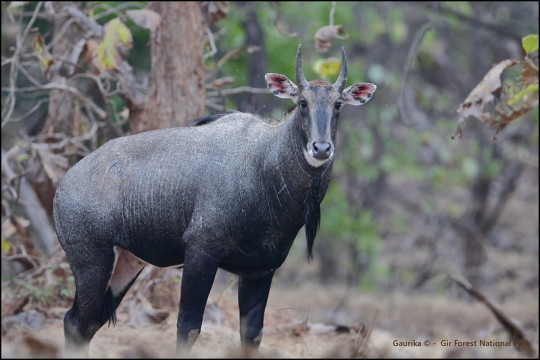
Nilgai or Blue bull (Boselaphus tragocamelus) @ Gir Forest National Park
By Gaurika Wijeratne
#gaurika wijeratne#photographer#nilgai#blue bull#animal#mammal#wildlife#boselaphus tragocamelus#gir forest national park#nature#flickr
80 notes
·
View notes
Text

Nilgai Boselaphus tragocamelus
Observed by ygurjar, CC BY-NC
79 notes
·
View notes
Text
The nilgai is the largest antelope of Asia, and is ubiquitous across the northern Indian subcontinent. It is the sole member of the genus Boselaphus, which was first described by Peter Simon Pallas in 1766. The nilgai stands 1–1.5 m at the shoulder; males weigh 109–288 kg, and the lighter females 100–213 kg.
662 notes
·
View notes
Text
Animal of the Day!
Nilgai (Boselaphus tragocamelus)
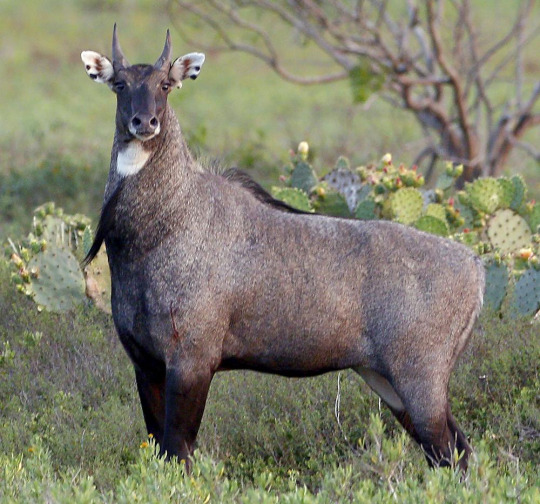
(Photo from Entomology Today)
Conservation Status- Least Concern
Habitat- India; Nepal; Pakistan
Size (Weight/Length)- 300 kg; 2 m
Diet- Grasses; Bark; Leaves
Cool Facts- The nilgai is the largest antelope in all of Asia and is only hunted by tigers, large leopards, and hyenas. These antelopes are sexually dimorphic with females being smaller and tawny in color while males are beefy and dark in color. Herds are made of relatively small groups of bachelor males or mothers and calves. The only times males and females interact is during the mating season. During the fall, bucks strut their stuff for groups of females. When a competing male doesn’t back off, the two spar by ramming into each other’s thick neck skin with their horns. After a nine month pregnancy, females usually give birth to twins. Females will stay with their mother’s herd for years while the males will move off to join their own bachelor herd.
Rating- 11/10 (Considered sacred throughout much of India.)
#animal of the day#animals#antelope#mammals#monday#august 14#nilgai#biology#science#conservation#the more you know
277 notes
·
View notes
Text

Unknown, Illustration: A Nilgai
Single Leaf of a Nilgai
illuminated manuscripts; folios (leaves)
Reign of Shah Jahan (1037-1068 AH/AD 1627-1658)
1031-1059 AH/AD 1625-1650 (Mughal)
Walters manuscript leaf W.865, this painting of a nilgai (also called a blue bull or Boselaphus tragocamelus), which is an antelope indigenous to Asia, is attributable to the reign of the Mughal emperor Shah Jahan (reigned 1037-1068 AH/AD 1627-1658). north India
ink and pigments on paper
89 notes
·
View notes
Text

Nilgai (Boselaphus tragocamelus)
The nilgai is the largest antelope in Asia, and it’s quite enigmatic- its scientific name actually translates to ‘cow-deer goat-camel’! Nilgai live in shrublands and grasslands across the Indian subcontinent, and are often seen as pests for the damage they do to farms. They have also become an invasive species in Texas. Despite being known to run up to 2,300 ft (700m) away if they feel threatened, they will also readily fight other nilgai with their necks and horns.
#markhors-menagerie#animal facts#animals#biology#fun facts#ungulates#even toed ungulates#ruminants#bovidae#antelope#nilgai
15 notes
·
View notes
Text
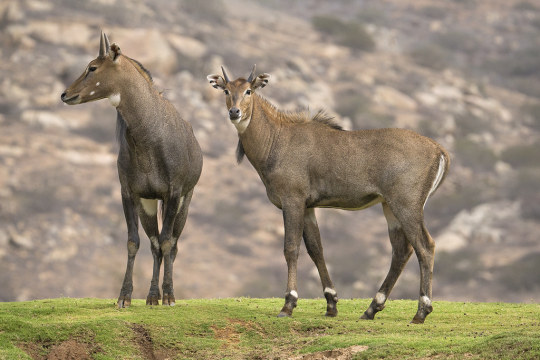

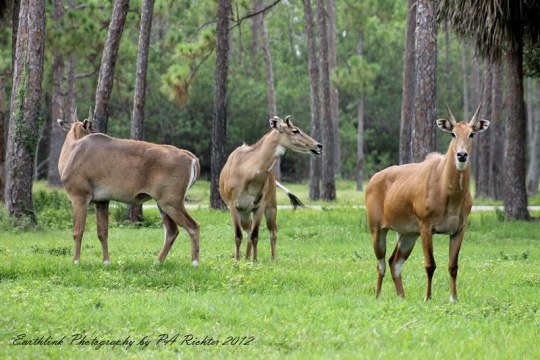


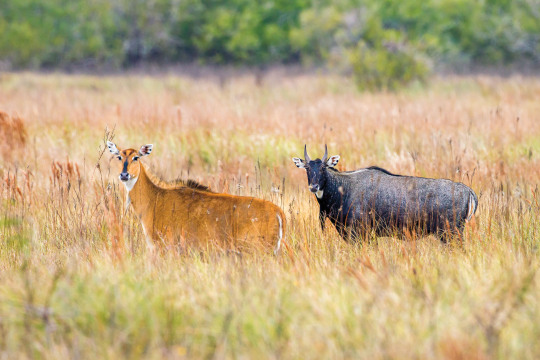
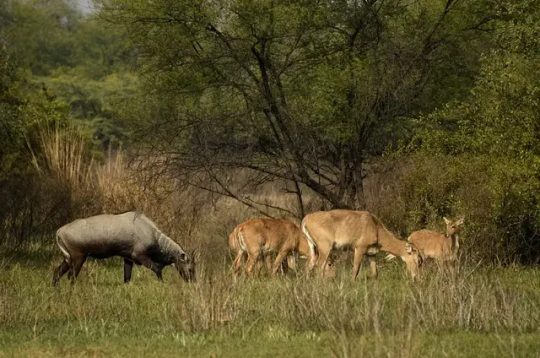
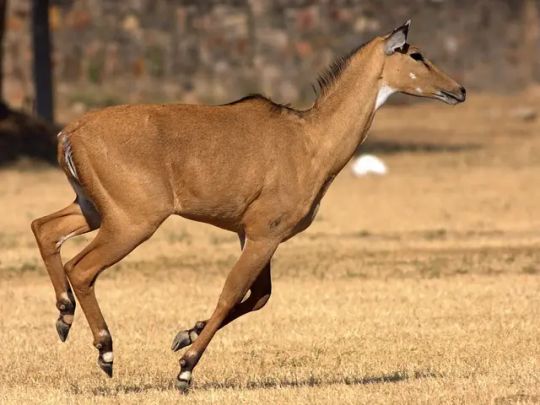

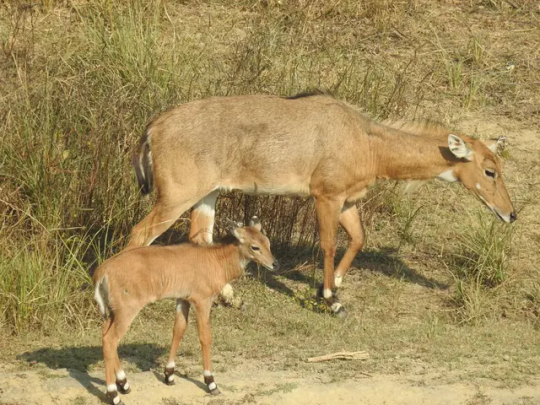


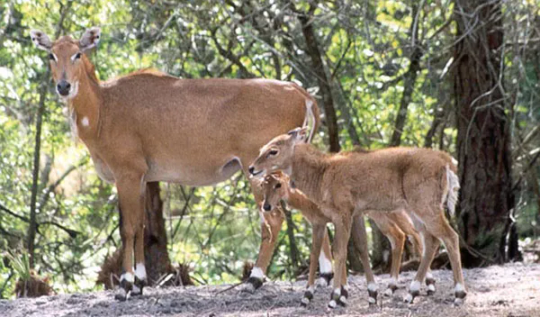

Boselaphus tragocamelus bette known as the nilgai, blue bull, or white-footed antelope, is a species of antelope endemic to the grasslands, scrublands, dry forests, and agricultural lands of India, Pakistan, and Nepal. Additionally they were introduced to the US state of Texas by big game hunters in the 1930s and have since become a feral and invasive species throughout Texas, Alabama, Florida and Mississippi and the Mexican state of Tamaulipas. They are diurnal and moderately social animals typically living in groups of less than 10 individuals, tho congregations of up to 70 are not unheard of, particularly during the breeding season. Three distinct types of herds are formed: females with young calves, adult and juvenile females, and all males. Nilgai are mixed feeders, eating a variety of grasses, shrubs, leaves, seeds, flowers, fruit, herbs, vines, and woody plants. Nilgai don’t often drink water getting the majority of there moisture from there diet. Nilagai are preyed upon by wolves, striped hyenas, leopards, dholes, coyotes, mountain lions, Asiatic lions, alligators, crocodiles, and tigers. Reaching 3.3 to 5ft (1 to 1.5m) tall at the shoulder, 5.7 to 7ft (1.7 to 2.1m) in length, and 220 to 640lbs (100 to 290kgs) in weight, Nilgai are the largest antelope in asia. They are characterized by there sturdy bodies, thin-legs, sloping back, a deep neck with a white patch on the throat, a short crest of hair along the neck terminating in a tuft, a dewlap, and white facial spots. Sexual dimorphism is prominent with males being considerably larger than females, and while females and juveniles are orange to tawny, adult males have a bluish-grey coat. Additionally only males have horns. Mating may occur throughout the year, but peaks during the breeding season which is October to February in there native range and December to March in the USA and Mexico. During such time male and female herds join up with one another and males become aggressive and fight among themselves for dominance. After an 8 to 9 month pregnancy a mother nilgai will give birth to 1 to 3 calves. They young remain with there mothers before setting off to join a different herd at around 10 months, under ideal conditions a nilgai may live up to 21 years.
#pleistocene pride#pleistocene#pliestocene pride#pliestocene#cenozoic#ice age#stone age#mammal#antelope#nilgai#blue bull
1 note
·
View note
Text

Nilgai (Boselaphus tragocamelus), male, family Bovidae, India
photograph by gabyrusu
366 notes
·
View notes
Photo

The nilgai (Boselaphus tragocamelus) (/ˈnilˌɡaɪ/, literally meaning "blue cow") is the largest antelope of Asia, and is ubiquitous across the northern Indian subcontinent. It is the sole member of the genus Boselaphus, which was first described by Peter Simon Pallas in 1766. The nilgai stands 1–1.5 m (3.3–4.9 ft) at the shoulder; males weigh 109–288 kg (240–635 lb), and the lighter females 100–213 kg (220–470 lb). #animalphotos #animalphotography #animalsofinstagram #animalsultans #birdsofinstagram #discovertheworld #exclusive_animals #explore_wildlife #featured_wildlife #ignature #igscwildlife #live_love_wildlife #marvelshots #marvelouz_animals #naturephotography #naturfotografie #natureisbeautiful #natureshooters #nature_hub #nature_perfection #naturepic #ourplanetdaily #wildlife_inspired #wildlife_seekers #wildlife_shots #wildlifeperfection #wildlifephotographer #wildlifephotography #anshumanpandeyphotography #illuminatingpixels (at Jhalana Reserve Forest) https://www.instagram.com/p/CpP5jTotddw/?igshid=NGJjMDIxMWI=
#animalphotos#animalphotography#animalsofinstagram#animalsultans#birdsofinstagram#discovertheworld#exclusive_animals#explore_wildlife#featured_wildlife#ignature#igscwildlife#live_love_wildlife#marvelshots#marvelouz_animals#naturephotography#naturfotografie#natureisbeautiful#natureshooters#nature_hub#nature_perfection#naturepic#ourplanetdaily#wildlife_inspired#wildlife_seekers#wildlife_shots#wildlifeperfection#wildlifephotographer#wildlifephotography#anshumanpandeyphotography#illuminatingpixels
0 notes
Text
Nilgai Female
Boselaphus tragocamelus

View On WordPress
1 note
·
View note
Text

Nilgai Boselaphus tragocamelus
Observed by robert_thibault, CC BY-NC
18 notes
·
View notes
Photo

Nilgai (Boselaphus tragocamelus)
Photo by Jono Dashper
#nilgai#blue bull#boselaphus tragocamelus#boselaphus#boselaphini#bovinae#bovidae#pecora#ruminantia#cetruminantia#artiofabula#artiodactyla#euungulata#scrotifera#laurasiatheria#eutheria#mammalia#tetrapoda#vertebrata#chordata
76 notes
·
View notes
Photo

Nilgai (Boselaphus tragocamelus) bull at Sultanpur National Park in India
Hemant Kishan
221 notes
·
View notes
Photo

Nilgai (Boselaphus tragocamelus) is simultaneously a cow, deer, goat, and camel. Boselaphus is a combination of bos (cow or ox in Latin) and elaphos (deer in Greek). Tragocamelus is a combination of tragos (goat in Greek) and kamelos (camel in Greek). Considered a pest in many north Indian states (including being classified as a vermin in Bihar) the gai in its name has probably ensured that this animal is grudgingly tolerated instead of being pushed towards extinction.
Photograph taken in Kanha, October, 2021
#nilgai#Boselaphus tragocamelus#kanha#animals#scientific names#latin#greek#blue cow#names#etymology#Madhya Pradesh#forest#Indian forest#shy animals#shy creatures#north india
2 notes
·
View notes